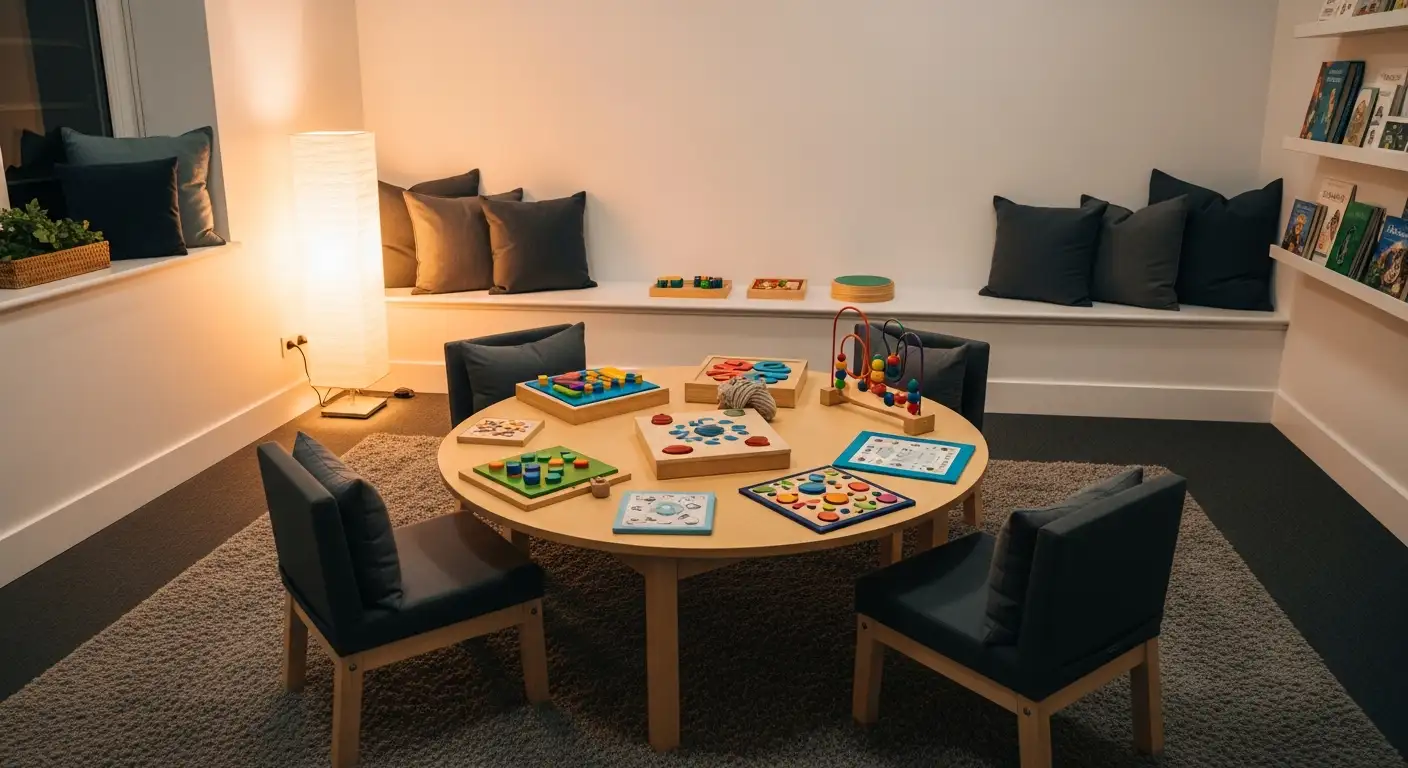Understanding the Role of ABA in Teaching Boundaries and Consent
Applied Behavior Analysis (ABA) therapy is a proven, evidence-based intervention designed to help individuals with autism spectrum disorder (ASD) develop critical life skills. Among the many areas ABA addresses, teaching boundaries and consent is essential, especially as children approach puberty and face new social and emotional challenges. This article explores how ABA therapy effectively integrates lessons on personal boundaries, consent, and related skills to promote safety, independence, and social understanding for children with autism.
What is ABA and How Does it Support Autism Therapy?
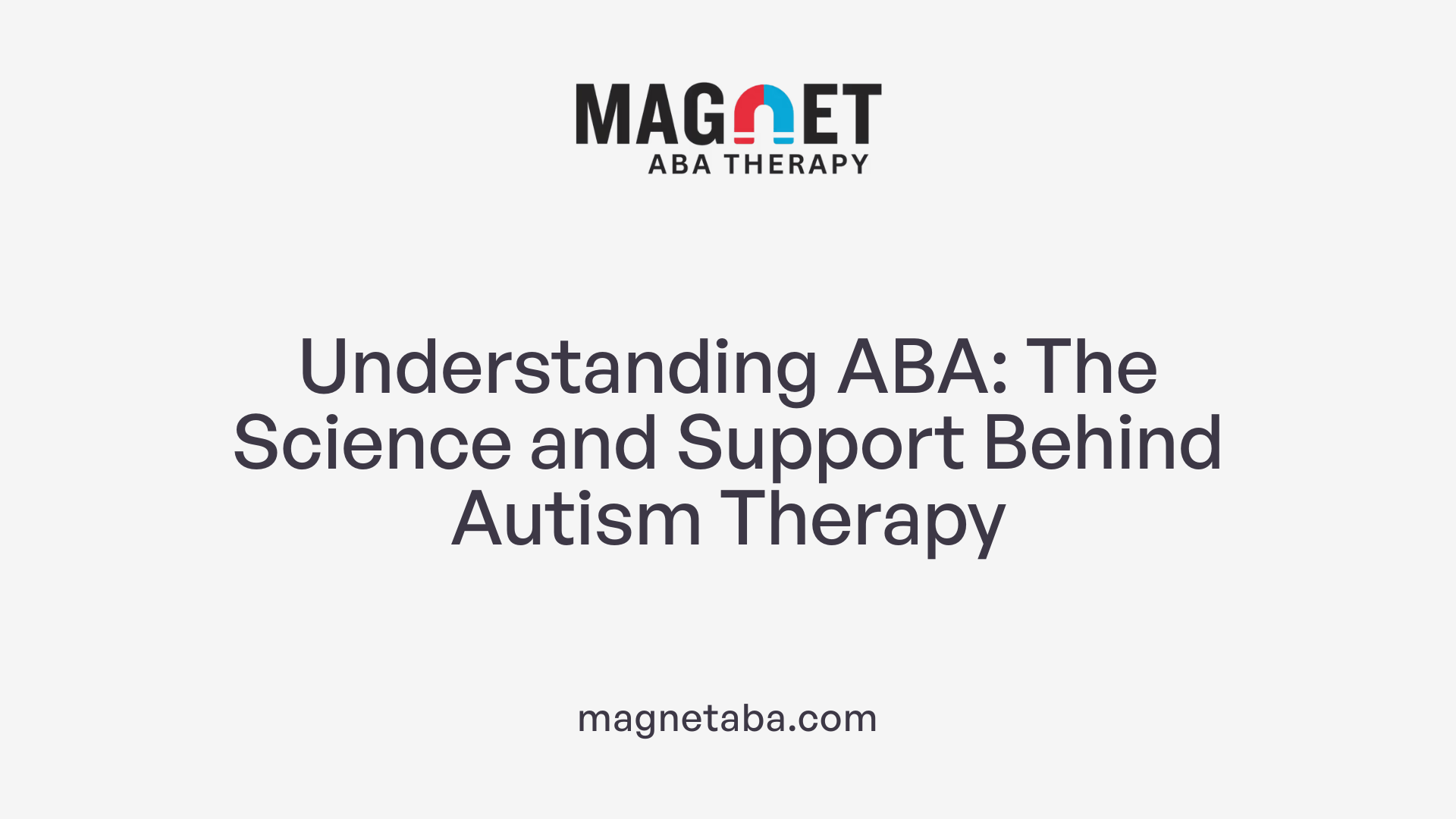
What is Applied Behavior Analysis (ABA) and how is it used in autism therapy?
Applied Behavior Analysis (ABA) is an evidence-based therapy grounded in the principles of learning and behavior science. It is primarily used to support individuals with autism spectrum disorder (ASD) by helping them acquire important skills, improve communication and social interactions, increase independence, and reduce unwanted behaviors.
ABA is highly individualized, with treatment plans tailored to each child's unique goals, needs, abilities, and age. This personalization ensures that interventions target skills relevant to the child’s daily life and developmental stage.
The therapy uses various techniques such as positive reinforcement to encourage desired behaviors, prompting to guide learning steps, and naturalistic methods like Discrete Trial Training (DTT) and Pivotal Response Treatment (PRT). ABA can teach a range of skills including language, social skills, functional self-help tasks like dressing and hygiene, and can also address challenging behaviors such as biting.
ABA is delivered in multiple settings to maximize learning possibilities. Children might receive sessions led by trained paraprofessionals either at home, school, or community locations for about 10 to 40 hours per week depending on their needs. Additionally, caregiver-mediated ABA trains parents or caregivers to implement strategies directly, making therapy more flexible and supporting skill generalization in everyday environments.
Extensive research shows that ABA is highly effective, especially when begun early and pursued intensively for two to three years. It is widely recognized as a best-practice intervention for autism, helping children make significant progress in language, cognition, and social engagement.
By combining scientific principles with individualized goals and family involvement, ABA therapy provides a comprehensive framework that fosters meaningful skill development and behavior management for children with autism.
Tailoring ABA Therapy: Personalized Approaches to Teaching Boundaries and Consent
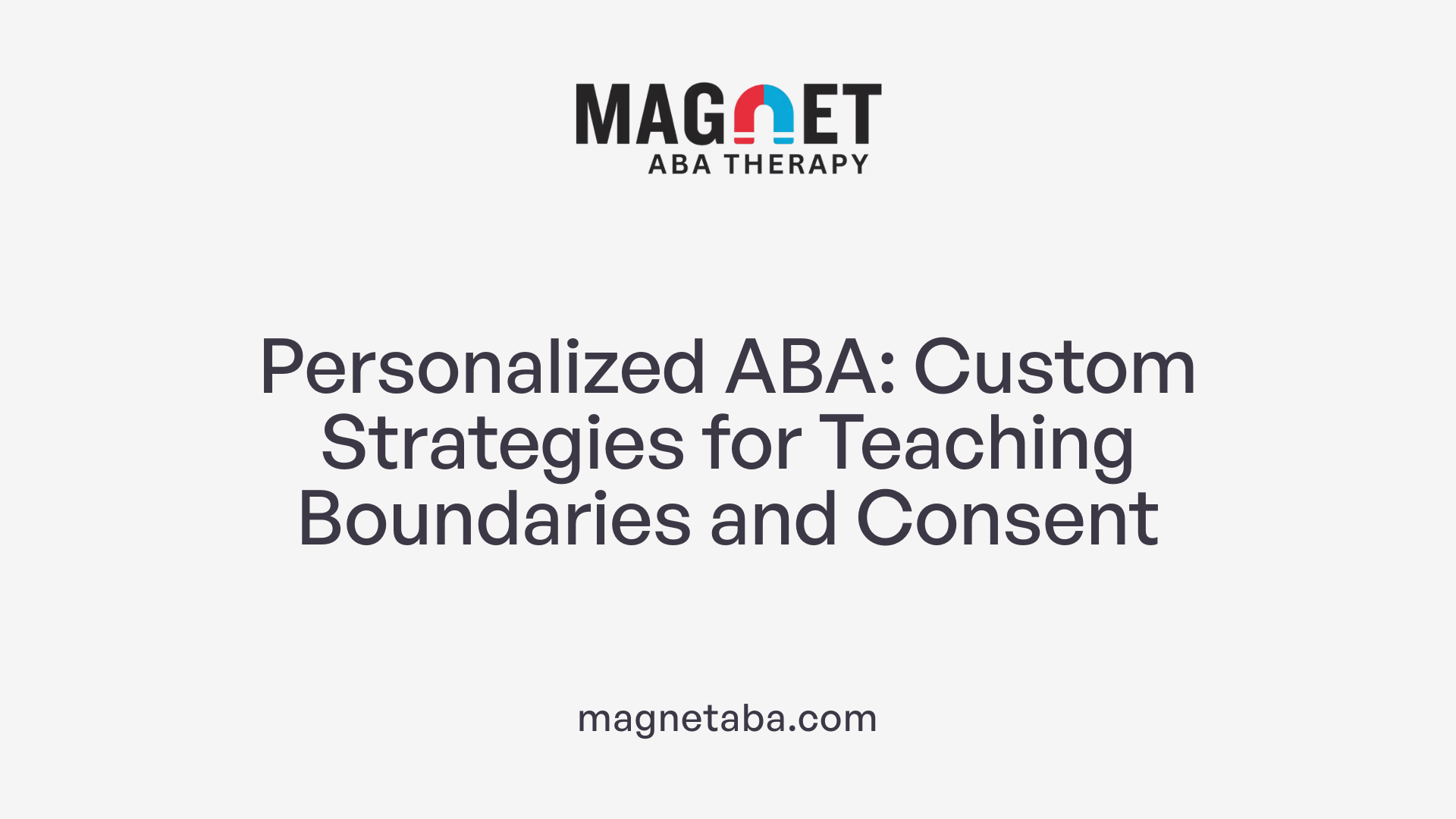
How do professionals tailor ABA therapy to meet individual needs?
ABA therapy customizes treatment by starting with a detailed assessment of each child's abilities, challenges, and learning preferences. This assessment helps professionals create personalized treatment plans that set clear, measurable goals geared toward nurturing essential skills and modifying behaviors.
What adjustments are made based on ongoing data?
Therapists continuously collect and analyze data on the child's progress. This allows them to adjust strategies, ensuring therapy remains effective as the child's needs and abilities develop. This flexible approach helps maintain engagement and success.
How are boundaries and consent lessons adapted for different ages?
ABA therapy incorporates age-appropriate lessons about boundaries, personal safety, and consent. These lessons teach children about private body parts, appropriate touch, and how to say "no" confidently. Using visual tools like social stories and visual schedules simplifies complex topics, making them accessible and understandable.
What visual aids support teaching puberty and consent?
Visual supports are integral in ABA therapy. Social stories describe changes during puberty and appropriate social behaviors, while visual schedules help children anticipate routines related to hygiene and self-care. These tools help reduce anxiety and support learning by breaking information into manageable steps.
How does family involvement enhance individualized therapy?
Parent training modules empower caregivers with strategies to discuss puberty, model boundaries, and manage hygiene routines at home. This consistent reinforcement promotes skill generalization and strengthens safety awareness across settings.
| Aspect | Description | Importance |
|---|---|---|
| Individualized Treatment Plans | Developed after assessing strengths and challenges of each child | Ensures therapy meets the unique needs of the child |
| Data-Driven Adjustments | Ongoing data collection guides modifications in techniques | Maintains effectiveness and responsiveness of therapy |
| Age-Appropriate Boundary Lessons | Customized lessons on consent and privacy based on developmental level | Enhances understanding and safety |
| Visual Tools | Use of social stories and visual schedules to clarify puberty and consent concepts | Facilitates comprehension and reduces anxiety |
| Family Training | Focused modules to train parents/caregivers on implementing ABA concepts at home | Encourages generalization of skills and consistent messaging |
Integrating Boundaries, Consent, and Self-Care: Core Components of ABA Therapy
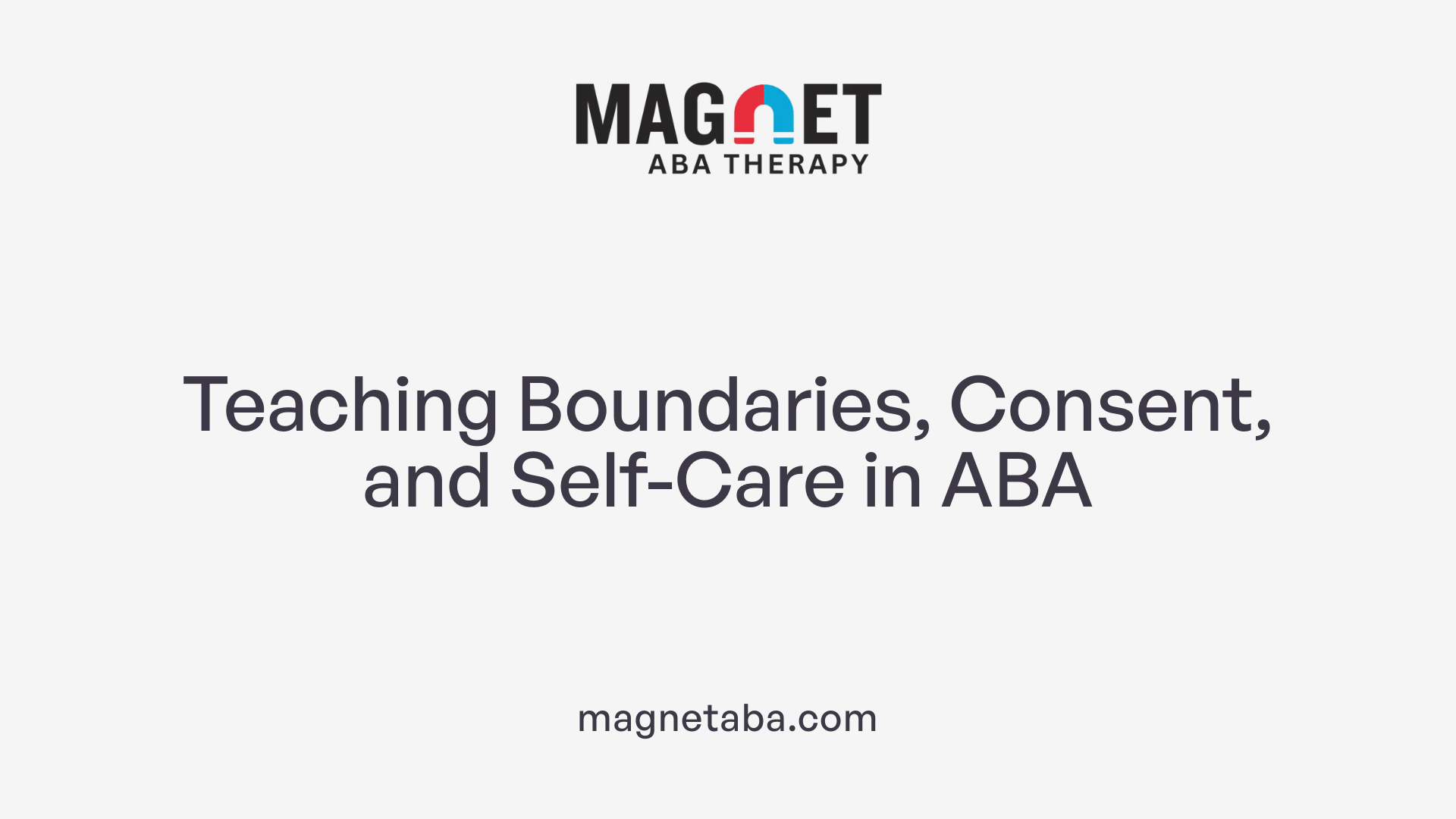
Teaching Private Body Parts and Appropriate Touch
ABA therapy explicitly addresses understanding private body parts and the nature of appropriate and inappropriate touch. This education is foundational for helping children with autism develop awareness of personal boundaries and recognize situations requiring caution.
Saying 'No' and Safety Awareness
A vital part of ABA therapy involves teaching children how to assert themselves by saying 'no' when uncomfortable. These lessons enhance safety by empowering children to decline unwanted interactions and communicate their feelings effectively.
Personal Hygiene and Self-Care Education
ABA therapy promotes independence through detailed instruction on personal hygiene and self-care. Utilizing task analysis, complex routines like handwashing, toothbrushing, and dressing are broken down into manageable steps. Reinforcement strategies encourage consistent practice and mastery of these essential daily skills.
Using Task Analysis and Reinforcement
Task analysis in ABA breaks down skills into sequential steps, facilitating step-by-step learning. Coupled with positive reinforcement, this approach motivates children to achieve each stage confidently, leading to overall independence.
Visual Schedules and Social Stories for Puberty Education
Visual schedules and social stories are powerful tools integrated in ABA to explain changes during puberty. They provide clear, concrete representations of abstract concepts, helping children understand bodily changes and emotional shifts in a structured and supportive way.
Supporting Emotional and Behavioral Changes during Puberty with ABA

Managing mood swings and emotional shifts
Puberty often brings mood swings and emotional changes that can be challenging for children with autism. ABA therapy helps manage these shifts by carefully observing behaviors and identifying triggers.
Use of functional behavior assessments
Functional behavior assessments (FBAs) are a cornerstone of ABA therapy in understanding the reasons behind certain emotional reactions. By analyzing when and why difficult behaviors occur, therapists can tailor strategies to each child's needs.
Developing coping strategies like breathing exercises
Once behaviors are understood, ABA therapists teach coping skills such as breathing exercises. These techniques help children learn to regulate their emotions independently.
Creating calm-down spaces
ABA also encourages setting up calm-down areas where children can retreat when feeling overwhelmed. These spaces are designed to be safe and comforting, supporting emotional self-regulation.
Parent training on puberty and boundaries
An essential part of ABA programs is training parents on how to support their child's emotional needs during puberty. Guidance includes talking openly about changes, maintaining hygiene routines, and modeling appropriate boundaries to reinforce lessons learned in therapy.
Together, these ABA-based approaches provide structured and compassionate support for children with autism navigating the emotional complexities of puberty.
The Crucial Role of Families and Caregivers in Enhancing ABA Outcomes
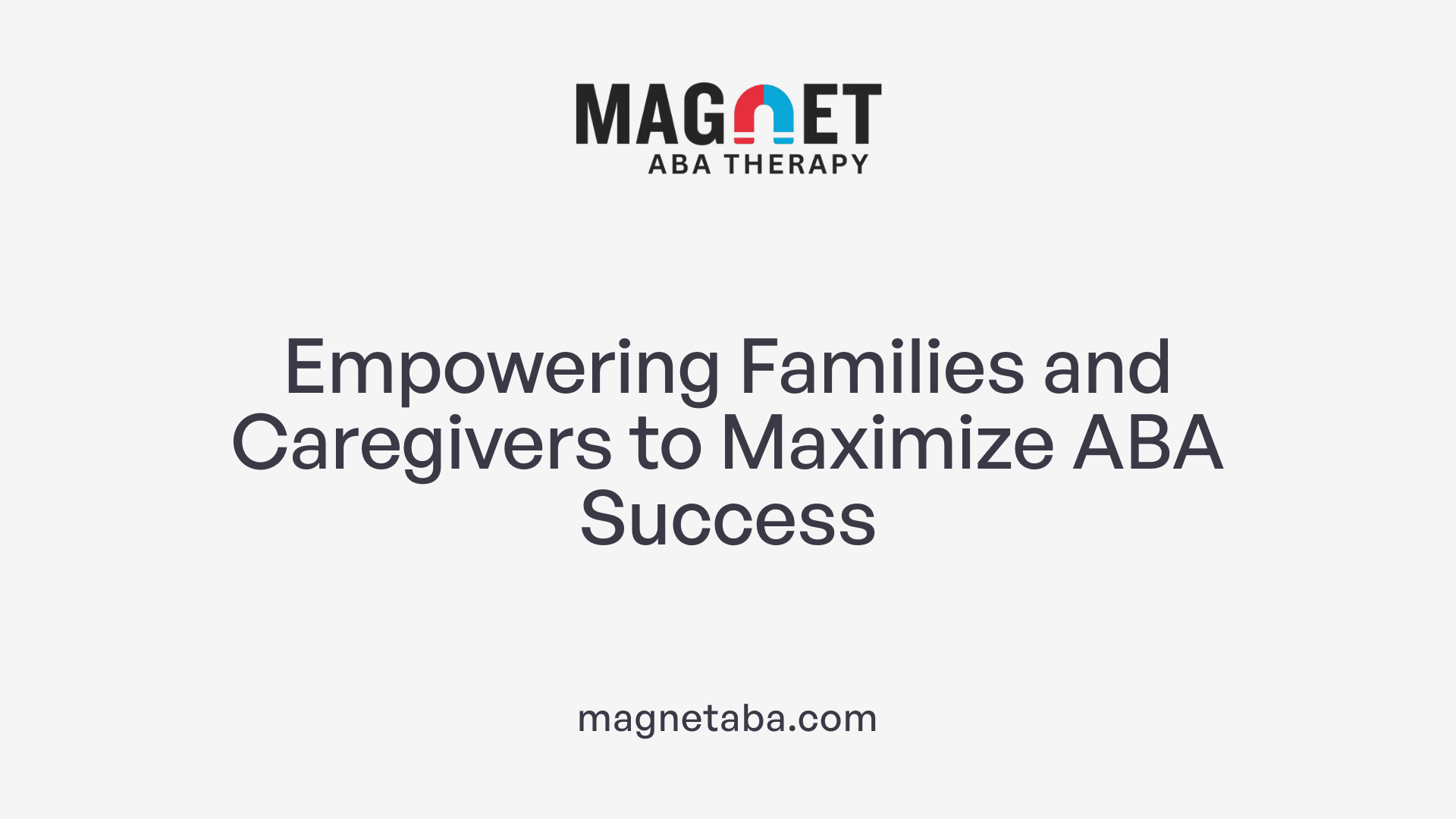
Parent and caregiver training modules
ABA programs commonly include training modules designed specifically for parents and caregivers. These modules provide essential guidance on topics such as discussing puberty changes, managing hygiene routines, and modeling personal boundaries within the home environment. This education empowers caregivers with the knowledge and confidence to reinforce ABA strategies seamlessly beyond therapy sessions.
Implementing ABA strategies at home
Families play an active role by applying ABA techniques during daily routines. Caregiver-mediated ABA allows parents to use learned reinforcement strategies and task analysis skills to teach vital self-care and social boundaries. This hands-on implementation helps children generalize new skills in varied settings and situations.
Consistent routines and reinforcement
Maintaining predictable routines and consistent reinforcement at home supports the progress made during formal ABA therapy. When caregivers reinforce behaviors like personal hygiene or appropriate social interactions regularly, children feel more secure and are more likely to retain and practice these new skills.
Communication and collaboration with therapists
Regular communication between families and ABA therapists is crucial. Sharing observations, progress updates, and challenges enables therapists to tailor individualized treatment plans precisely to the child’s evolving needs. Collaborative problem-solving fosters effective interventions and reinforces consistency across all environments.
Benefits of caregiver-mediated ABA
Caregiver-mediated ABA offers flexibility and convenience, allowing families to practice therapy techniques throughout the week rather than relying solely on scheduled sessions. This approach also promotes a supportive family dynamic where parents are directly involved in their child’s development, often leading to faster skill acquisition and improved behavioral outcomes.
By actively engaging in training, implementing strategies at home, and maintaining open communication with therapists, families and caregivers enhance the effectiveness of ABA therapy and contribute significantly to their child’s development and well-being.
Promoting Safety and Independence through ABA
ABA therapy offers a comprehensive and individualized approach to teaching children with autism critical lessons about boundaries, consent, and self-care. By combining evidence-based techniques with tailored treatment plans, visual supports, and family involvement, ABA ensures that children develop the skills necessary to navigate social and emotional changes safely and confidently. Supporting these children during puberty and beyond helps foster independence, social awareness, and overall quality of life — demonstrating the vital role of ABA in empowering individuals with autism to lead fulfilling lives.
References
- Preparing for Puberty: How ABA Therapy Helps Children ...
- Is Applied Behavior Analysis (ABA) Therapy Right for Your ...
- NYS Applied Behavior Analysis: License/Certification ...
- How to Become an ABA Therapist - School of Education
- How to Become an Applied Behavior Analyst (ABA) Therapist
- Questions and answers about ABA
- What is Applied Behavior Analysis?
- How to Set ABA Goals: A Step-by-Step Guide for Success
- Applied Behavior Analysis (ABA)






